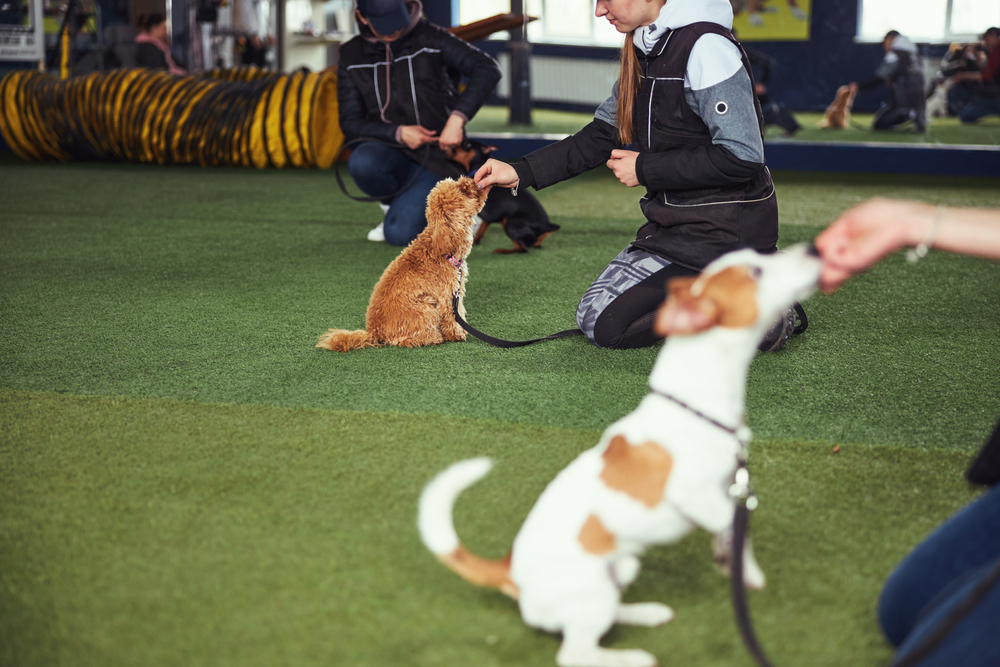No two dogs are alike. Some charge into new environments with boundless energy, eager to play and explore. Others hang back, cautious and unsure of themselves until they feel safe. Because of these differences, a one-size-fits-all approach doesn’t work when it comes to training.
That’s why experienced trainers design customized dog training programs that reflect not only a dog’s age and breed but also their unique temperament. A well-structured camp program takes these traits into account, ensuring every dog gets the right mix of structure, guidance, and encouragement. At Innovative K9 Academy, we’ve seen firsthand how tailoring the training journey leads to better progress and happier, more confident dogs.
Why Temperament Matters
Temperament refers to the natural tendencies and behavioral style a dog shows when interacting with people, animals, or environments. It’s not the same as behavior (which can be shaped through training) but rather the foundation from which behaviors grow.
A bold, social puppy may need boundaries and impulse control, while a reserved rescue dog might require confidence-building exercises. Understanding these starting points allows trainers to design programs that support each dog’s strengths and challenges.
Ignoring temperament is a recipe for frustration. A high-energy dog forced into repetitive drills without outlets for activity may become restless or resistant. Likewise, a shy dog pushed too quickly into group play may shut down. Thoughtful customization ensures the training environment feels supportive, not overwhelming.
Assessing Dogs Before Training Begins
Before a dog enters a camp program, trainers typically perform an evaluation. This assessment looks at factors such as:
- Energy Level: Is the dog calm and laid-back, or do they thrive on constant activity?
- Confidence: Does the dog approach new situations with ease, or are they hesitant?
- Social Skills: How do they interact with other dogs and people?
- Stress Triggers: Are there situations that consistently cause reactivity, fear, or overexcitement?
At Innovative K9 Academy, this initial assessment is crucial. It gives trainers the information they need to create a training roadmap that feels achievable and safe for the dog while setting realistic expectations for the owner.
Building Programs for Energetic and Playful Dogs
High-energy dogs—think Border Collies, Belgian Malinois, or Labradors—often thrive when given structured outlets for their enthusiasm. For these dogs, camp programs may include:
- Advanced obedience drills to keep their minds engaged.
- Agility-style activities to burn energy in constructive ways.
- Frequent breaks for play and exercise to prevent boredom.
These programs emphasize balance: enough stimulation to satisfy their drive, paired with calm training sessions that teach impulse control. Without this balance, energetic dogs may turn to destructive behaviors like chewing, barking, or pulling on the leash.
Supporting Shy or Fearful Dogs
On the other end of the spectrum, some dogs enter camp unsure of themselves. They may have had limited socialization as puppies or negative experiences that left them cautious. For these dogs, the program needs to move slowly and focus on building trust.
Strategies may include:
- Gentle exposure to new environments at a pace the dog can handle.
- One-on-one bonding sessions with trainers to establish trust.
- Positive reinforcement with high-value rewards to encourage confidence.
- Gradual introduction to other dogs or group settings to foster safe social skills.
The goal isn’t to rush progress but to lay a foundation where the dog feels secure and supported. Over time, these dogs often surprise their owners with how much confidence they gain.
Working with Independent or Stubborn Dogs
Some dogs have a temperament that leans toward independence. They may appear aloof or uninterested in commands, not because they lack intelligence but because they don’t see the point. For these personalities, trainers focus on motivation.
Customized strategies might include:
- Finding the right rewards (treats, toys, or play) to spark interest.
- Short, engaging sessions that prevent boredom.
- Clear, consistent communication to build trust and reliability.
These dogs benefit from training programs that respect their independence while still holding them accountable for learning and following cues.
Tailoring Programs for Social Butterflies
Then there are the extroverts—the dogs who love everyone and everything. While this may seem ideal, overly social dogs sometimes struggle with focus. Their enthusiasm can translate into jumping, pulling toward people, or rough play with other dogs.
For these dogs, trainers customize camp programs with:
- Structured greetings to teach polite manners.
- Leash work in distracting environments to improve focus.
- Controlled group play that balances fun with boundaries.
This way, their sociable nature is celebrated, but also channeled into safe, respectful behavior.
The Owner’s Role in Customized Programs
While camp programs provide the foundation, owners play a critical role in reinforcing progress at home. Trainers provide guidance on continuing the strategies that worked during camp, whether it’s daily obedience practice, consistent social exposure, or confidence-building exercises.
Innovative K9 Academy places a strong emphasis on owner education. After all, the dog’s temperament doesn’t change when camp ends—what changes is the dog’s ability to manage challenges and the owner’s ability to support them.
Why Customization Creates Lasting Results
Dogs learn best when they feel understood. By customizing camp programs, trainers ensure that every dog—whether bold, shy, playful, or stubborn—receives training that matches their needs. This prevents frustration, builds trust, and allows the dog to thrive in ways that a generic program never could.
At the end of the day, customization isn’t just about achieving commands. It’s about creating an environment where each dog’s temperament is respected and shaped into the best version of themselves. That’s why specialized, temperament-based programs consistently deliver better outcomes and stronger bonds between dogs and their owners.

